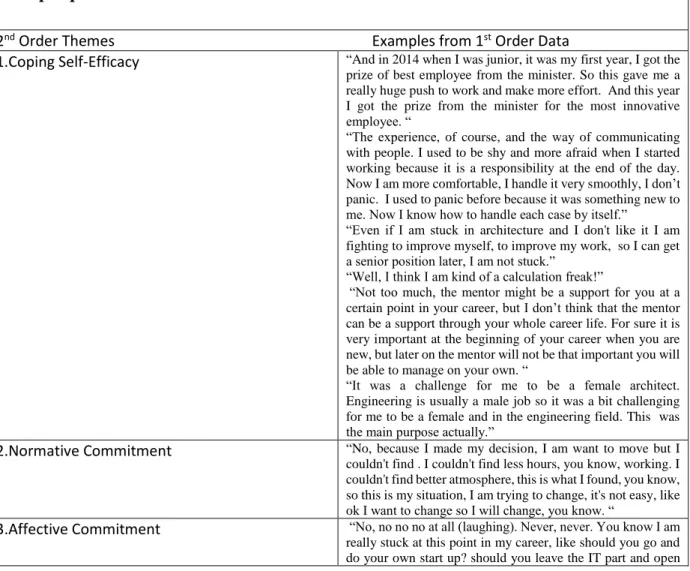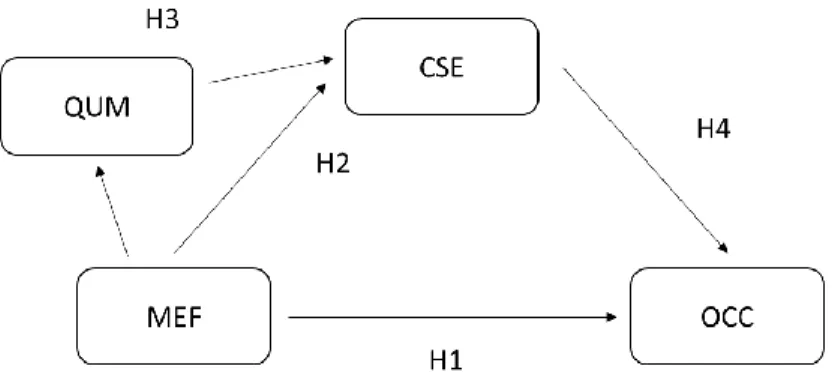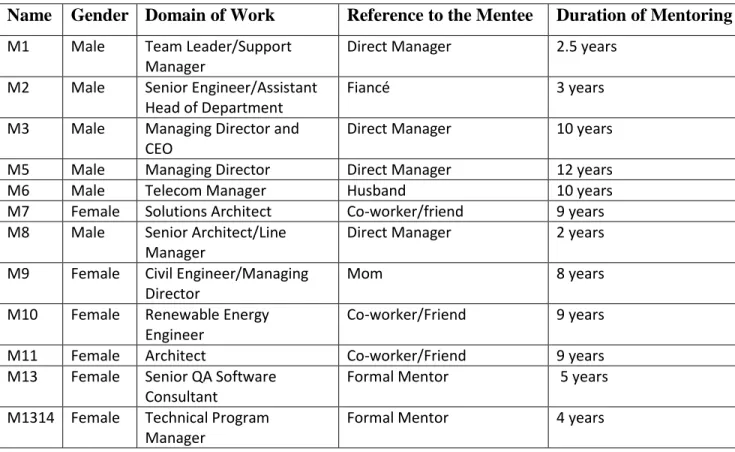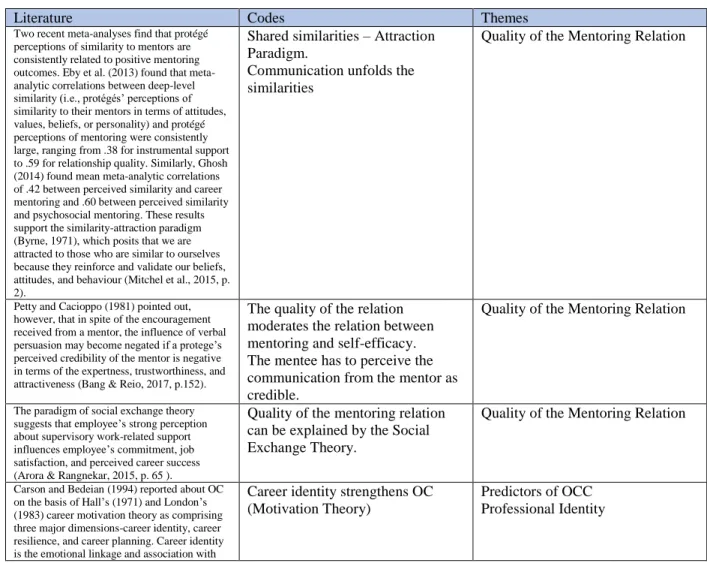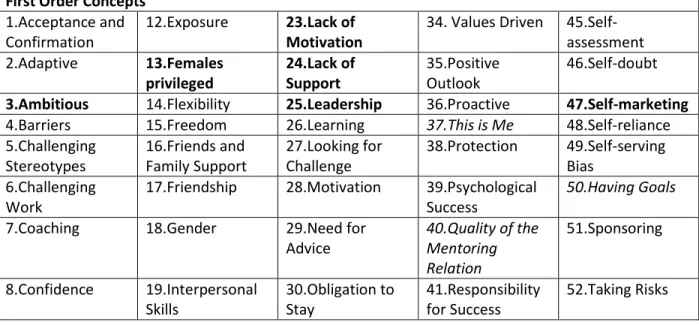The study aims to shed light on the dynamic approaches women in STEM fields take to overcome occupational career challenges. A longitudinal study of the career stages of women working in STEM could thus provide more insight into the impact of the mentoring functions.
Statement of the Research Problem
Similar underrepresentations have been reported in most other countries worldwide (World Bank Education Statistics 2017, Hill et al. 2010, Hunt 2016). Thus, there have been several initiatives in different countries to increase the recruitment of qualified people in STEM subjects and jobs and to develop a larger and more diversified talent pool (Byars-Winston et al. 2010).
Aim and Scope
Some researchers have categorized factors that contribute to the underrepresentation of women in STEM careers as related to cultural biases in hiring processes (Reskin 2003) or structural factors, which may include a "cold climate" that results in gender segregation and dominance male. Sandler et al 1996). Despite the fact that the findings and recommendations of these studies can be taken into consideration and are being applied in many organizations, the representation of women in field work has not encountered any significant changes for more than ten years (Fouad et al. 2011).
Objectives of the Study, Research Questions, and Hypotheses
The objective of this study is to increase attention on the elements of the process of persistence and professional commitment of women working in STEM fields. This study sheds light on the dynamic approaches that women in STEM fields adopt to overcome professional challenges.
Research Methodology
Contribution to Knowledge
For example, the results of this study highlight the important role that self-efficacy plays in shaping career decisions. The results of this study also contribute to SCCT by drawing on the important role that mentoring plays as a contextual factor in enhancing the self-efficacy and career commitment of women working in STEM.
Limitations
The study findings further reinforce the idea that career development interventions should be used to strengthen women's efficacy beliefs about their interests, values and talents. The study contributes to knowledge by attempting to provide an in-depth explanation regarding the career and psychological-related functions of mentoring.
Outline of the Thesis Chapters
The under-representation of women in STEM industries has been a major issue of inquiry for many researchers (Sassler et al. 2017). Engagement in the profession is discussed in relation to women in STEM and the current leaky pipeline issue.
Occupational Commitment
In addition, career success, satisfaction, and involvement are interrelated with the discussion of career commitment (Baker et al. 2002). Career commitment has been found to be a major predictor of intention to stay in one's occupation (Blau & Lunz 1998) and a precursor to intention to change occupation (Carless & Bernath 2007).
Meyer’s Three-Dimensional Model
Many researchers have explained that normative commitment can be excluded as a third component of the model because of its recurring association with affective commitment. However, there was a positive relationship between affective commitment and the quality of the mentoring relationship.
The Social Cognitive Career Theory/Career Self-Management Model
As an extension of SCCT's content model of choice, the career self-management model uses many of the same basic dimensions but defines and conceptualizes them in a new way. They may influence goals indirectly through their relationships with self-efficacy and outcome expectancies (Sheu et al. 2010).
Self-Efficacy
They suggest that the underrepresentation of women in STEM fields may be due to low self-efficacy. Betz (1983) because of the apparent influence of self-efficacy on career performance, interests, and persistence.
Mentors as Contextual Supporters
Many recent researchers have studied the influence of perceived support aspects in relation to various educational and occupational outcomes (Stockard et al., 2010). Several researchers have indicated that mentorship positively influences successful career progression and development (Roche 1979, Griffin et al. 2010).
Protean Attitude
Therefore, the protean career tends to take a rather holistic approach to career by considering work in the context of one's whole life and bringing about learning and reshaping of one's career aspirations by going beyond organizational boundaries (Clarke 2013). Career development under protean career management is determined by the person's desire to grow, to have autonomy and to continue learning (Hall 1996).
STEM and Women in the MENA Region
However, the most important question remains whether Arab women who graduate from STEM fields enjoy a fair degree of participation in the workplace. In Egypt, for example, female labor force participation experienced a major boost in the 1960s due to the major industrialization movement that the country underwent (Sidani 2016). Research indicates that the modernizing movements across the Middle East in the 20th century have emphasized the importance of education in the technical and.
In addition, part of the new generation believes that the economic situation in the region, rather than religion, seems to affect women's rights and work opportunities negatively (Mogahed 2012). The Economic Participation and Opportunity Measure put forward by the World Economic Forum indicates that the MENA region had the largest gender pay gap in the world in 2012 (Hausmann et al. 2012). Many research studies discuss the cultural stereotypes and discrimination that negatively affect Arab women's participation and advancement in the workplace.
Also, women in the region face twice the unemployment rate at 43.9% compared to 22.9%. In addition to socio-cultural barriers, women in the Arab world face legislative challenges that further hinder their participation in the workforce.
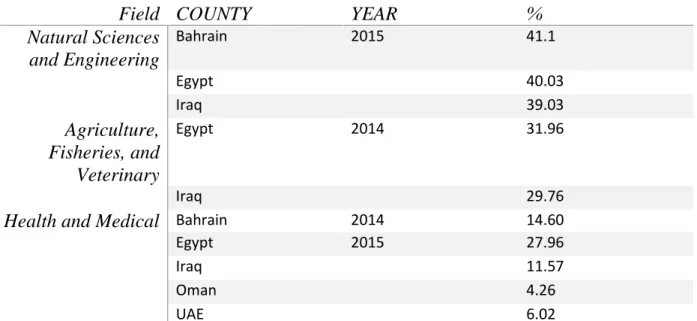
Statement of Hypotheses
However, the impact of this message from the mentor will have a stronger impact on the mentee's self-efficacy given the quality of the relationship between the two. In a study conducted in Singapore, Chan et al. 2008) found a positive correlation between self-efficacy and occupational commitment among 2130 primary school teachers and 1587 secondary school teachers. Employees with high self-efficacy tend to set high career goals and continue to achieve these goals (King 2004).
As previously mentioned, the literature on SCT emphasizes the importance of goal setting in terms of career regulation and self-efficacy behavior (Lent et al. 2013). Personal learning development acts as a moderator where it plays an important role in the relationship between self-efficacy and career commitment. Based on goal-setting theory, people with high self-efficacy tend to set more challenging goals compared to those with lower self-efficacy (McKee et al. 2006).
Thus, individuals with high self-efficacy have higher outcome expectations, which may lead them to exert more effort and perform better (DiRenzo et al. 2010). Thus, we also predict that coping self-efficacy and mentoring will have a positive influence on occupational engagement.
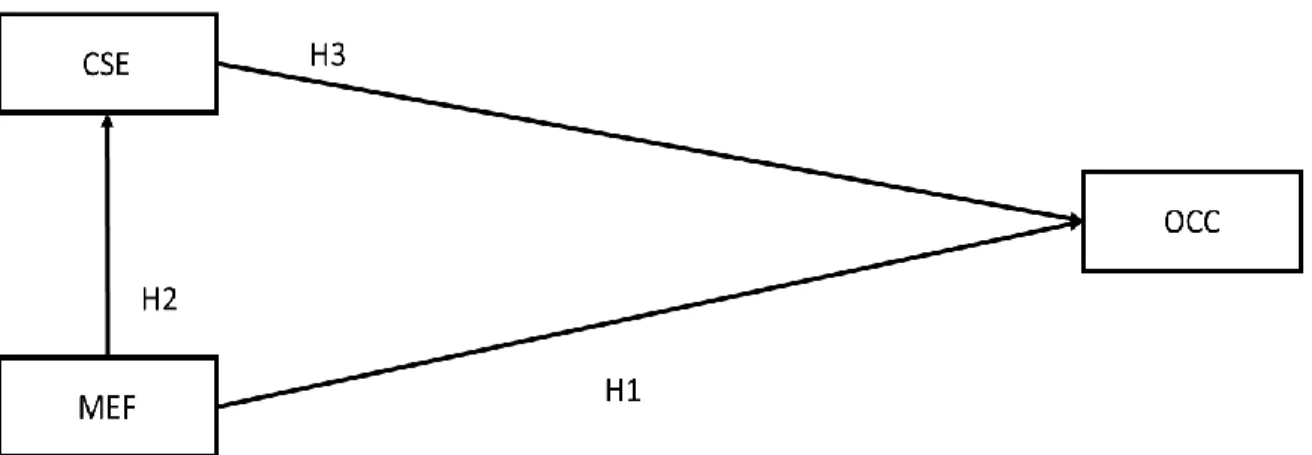
Mixed Methods Research Design
The time orientation which will be sequential and finally the emphasis which will be the dominance of quality design. I am hereby including a detailed diagram that would better explain the synergistic mixed methods design process adopted. It clearly identifies the main method adopted (qualitative), the complementary component (quantitative), the sequential organization of the two models and the point of interface in the results section.
The next step was to analyze the data using Nvivo software which led to the research findings of the QUAL. The potential advantages of the survey are the large sample size and the advanced numerical analysis that helps in finding trends in the data (Patton 2002). The reason why this study uses mixed methods is to expand the scope and dimension of the research by applying two analytical strands, one qualitative and the other quantitative, each in a different phase.
Another criterion taken into account is the number of data types that will be used in the meta-inference phase when combining the two results. The last criterion considered is the degree of interaction between the two model analyses.
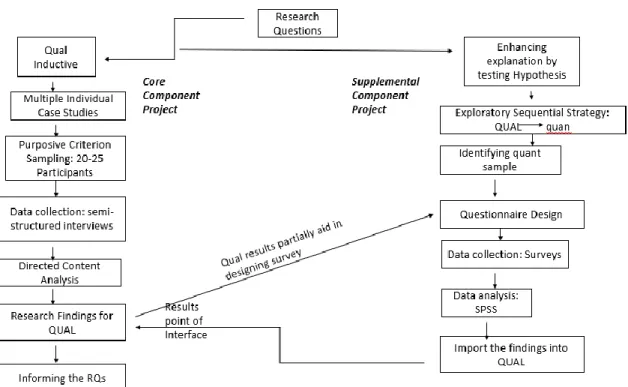
Qualitative Study Design – Phase 1
The multiple case study design may also strengthen the external validity and generalizability of the findings. The study's exploratory theme, research questions, and data collection method all indicated the appropriateness of using thematic analysis. Codes were used to identify certain pieces of data that were relevant to the research questions.
Protean attitude enhances the mentoring relationship through the eagerness of the mentee to learn more. Information of the participants: The participants were informed about the nature and purpose of the study. Validity in this sense is relative and must be assessed in relation to the purpose of the study and the status of the research (Maxwell 2013).
External validity deals with the extent to which the research results can be generalized (Merriam & Tisdell 2015). Several steps have been taken throughout this study to ensure reliability and validity of the results.

Quantitative Design- Phase 2
I used to be shy and more scared when I started working because it is a responsibility at the end of the day. 6. The quality of the mentoring relationship “Because I have always been fascinated by the knowledge he has. During the quality of the mentoring relationship, participants discussed the reasons why they chose their mentor.
P26: “She has the same bachelor's degree as me, she is not much older than me, only 2 years older. She was aware that this is not the case in all companies in STEM sectors. One of the main issues discussed by the participants is the lack of a mentoring culture in the region.
The lack of a mentoring culture is a major barrier for women in STEM in the Arab region. It is not his belief, it is the belief of the environment, as I told you.” This helped her to further expand the services of the IT department she headed.
Work-life balance and family responsibilities were among the issues discussed by the participants.
